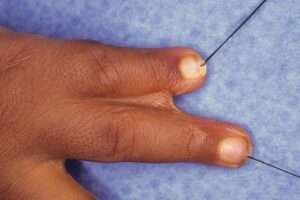Syndactyly Surgery
Syndactyly Surgery – Correcting Webbed Fingers and Toes for Improved Function and Appearance
Syndactyly is a congenital condition in which two or more fingers or toes are fused due to incomplete separation during fetal development. Syndactyly surgery is performed to separate the fused digits, aiming to improve both functionality and appearance. This procedure helps patients gain better mobility, grip strength, and a more natural-looking hand or foot.
What is Syndactyly Surgery?
Syndactyly surgery is a reconstructive procedure designed to separate webbed fingers or toes. The technique restores individual movement and enhances the functional use of the hand or foot. The surgical approach depends on the severity of the condition and whether the fusion involves only skin or also affects bones and joints.
Through this procedure, we aim to:
Separate fused fingers or toes to enhance mobility
Improve hand or foot function for better performance in daily activities
Achieve a more natural and symmetrical appearance
Use skin grafts if necessary to cover areas after separation
Support proper healing and long-term functionality
Who Can Benefit from Syndactyly Surgery?
Surgery is recommended for patients who:
Have digits fused by skin, bone, or both
Experience difficulty gripping objects or walking
Show noticeable asymmetry between hands or feet
Want to improve the aesthetic appearance of the affected area
Have fusion involving critical fingers like the thumb or index finger
Early surgical intervention, ideally between 6 months and 2 years of age, typically yields the best outcomes. However, adults can also benefit from this procedure.
How is Syndactyly Surgery Performed?
This surgery is usually done under general anesthesia and takes approximately 1 to 3 hours depending on the complexity. The process includes:
Making precise incisions to separate the fused digits while preserving nerves and blood vessels
Using skin grafts if necessary, often harvested from the inner arm or groin
Reshaping and suturing the separated digits to support proper healing
Applying splints or bandages to stabilize the area during recovery
Recovery Process After Syndactyly Surgery
Healing time varies based on the individual and the extent of the surgery, but generally involves:
Mild swelling and discomfort during the initial days
Wearing bandages or splints for 2–3 weeks
Physical therapy or exercises to improve mobility and function
Full recovery and return of function typically within 3 to 6 months
Regular follow-up appointments to monitor healing and address any complications
Why Choose Us for Syndactyly Surgery?
We utilize precise, individualized surgical techniques to deliver optimal functional and aesthetic results. Our team employs advanced microsurgical methods to reduce scarring and support healing, and we offer thorough post-operative care, including rehabilitation. Our focus is always on improving both the function and appearance of the hands or feet, enhancing the overall quality of life for each patient.
If you or your child has syndactyly and would like to learn more about surgical treatment, contact us to schedule a consultation. We are here to support you every step of the way.

